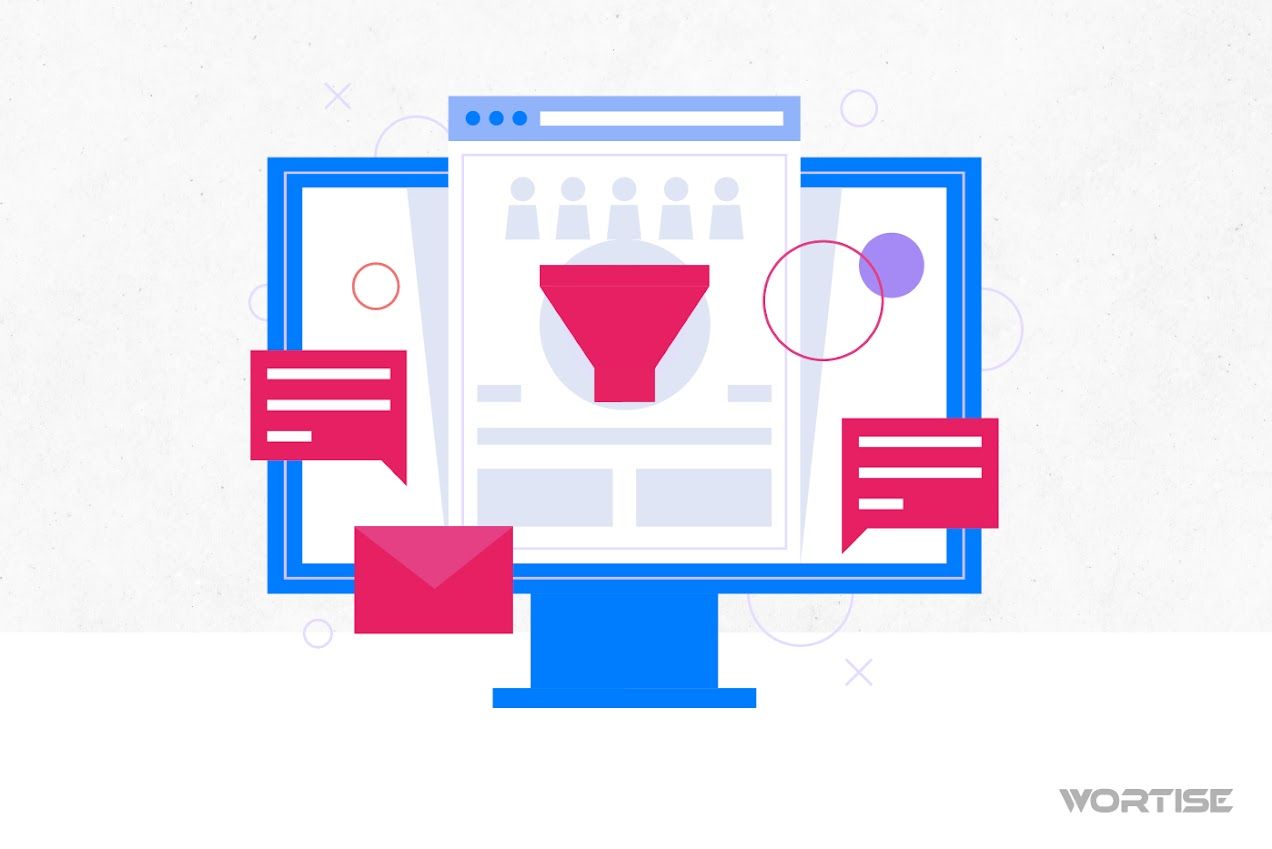Ad Network vs Ad Server vs Ad Exchange: Which One to Choose to Monetize Your App?
If the digital advertising monetization industry were a restaurant, the menu would be quite varied, allowing each customer to choose the dish that appeals to them the most. In short, today publishers have several platforms at their disposal to monetize, and it’s up to them to choose the best option between ad networks, ad servers, and ad exchanges. Understanding how each one works is key to making the right choice.
Although each has its pros and cons, all these platforms facilitate advertising transactions on websites and mobile apps by being subject to automated processes.
At Wortise, we want to show you how ad networks, ad servers, and ad exchanges work so that you can choose the ideal one based on your goals. Ready to clear up your doubts? Let’s dive in!
What is an Ad Server?
The ad server has been around since before the programmatic advertising boom. It functions as a sort of centralized platform that allows all parties involved in the advertising industry to manage, schedule, and track ads across apps, websites, and other digital spaces.
An ad server can check available space and select the creatives that best fit those spaces. Therefore, we can summarize its operation in two main functions.
The first is the ability to serve ads to devices, creating an active advertising dynamic, and the second is to count and track the delivery of creatives. This function is known in the programmatic world as “delivery” and is crucial to ensure that ads actually reach their intended audience.
In conclusion, we can say that the ad server is, without a doubt, responsible for the logistics and distribution of ads.
Advantages of the Ad Server for Monetization
As we mentioned, an ad server has a key feature: centralization. This allows you to manage all your advertising spaces in one place, avoiding the need to jump between different platforms. However, this is just one of its advantages. Let’s look at others:
- Performance Optimization: Using this software guarantees detailed tracking of ad performance, allowing you to see metrics and impressions to ensure everything is working properly.
- Advanced Targeting: An ad server provides highly precise market segmentation, enabling you to reach specific users based on key data like location and digital behavior.
- Versatility: It’s ideal for both individual advertisers and agencies since all demand-side platforms (DSP) work with an ad server. In fact, sometimes publishers and advertisers don’t even realize that ad servers are integrated into the DSPs they frequently use.
What is an Ad Network?
Let’s get straight to the point. An ad network is a platform that connects publishers and advertisers to facilitate the buying and selling of advertising spaces. It acts as an “intermediary” that makes this process transparent, fast, secure, and free from geographical limitations.
It aggregates the publishers’ inventory and matches it with global advertiser demand, allowing precise targeting based on behavior, age, location, and more. Advertisers define these variables along with the budget and frequency caps.
Additionally, it collects a list of publishers willing to sell their inventory to advertisers at a higher price. Advertisers pay and receive what they seek: more traffic and click-through rates. All this interaction data is sent immediately to advertisers for performance analysis.
In this process, the algorithms used by ad networks are essential for matching the best offers and exposing them to users. Their specialty lies in pre-segmented inventory, enabling them to target specific audiences at higher rates.
Why Should You Use Ad Networks?
There are good reasons to monetize through ad networks and take advantage of the global rise in digital advertising. For example, ad networks offer a highly competitive auction mechanism, allowing publishers to get the best price for their inventory. On the other hand, advertisers receive premium inventory that fits their budget. It’s also important to note that advertisers can specify the cost per click, interests, and ad placement.
Another significant advantage is the ability to find inventory automatically without investing time or effort in what can be a tedious task. Ad networks filter impressions and proposals from the best publishers.
Additionally, ad networks give access to a global marketplace with millions of publishers and advertisers, expanding the reach of creatives and offering two main benefits: more revenue for publishers and more visibility for advertisers.
Lastly, it’s worth mentioning the ease they provide in managing advertising campaigns through tracking and control tools, as well as the ability to filter ads to show only those that are truly relevant.
What is an Ad Exchange?
The third platform we’ll discuss is the ad exchange, a type of marketplace where publishers and advertisers buy and sell inventory without intermediaries.
Ad exchanges conduct real-time auctions and sell inventory to the highest bidder based on each impression, all through a real-time bidding (RTB) technology. Is this beneficial? Absolutely. This competition for higher prices allows publishers to maximize the value of their inventory.
Benefits of Ad Exchanges
With ad exchanges, everyone wins: publishers earn good money, and advertisers reach their target audience precisely. But there are other benefits that ad exchanges offer. Let’s explore a few:
- Increased Demand: Publishers can access a wide network of advertisers worldwide, at any time. This significantly increases the chances of selling most of their ad inventory in a shorter period.
- Filtering: Each publisher has control over which ads are displayed on their digital properties, a huge advantage for avoiding competitive or inappropriate ads that could lower the inventory’s quality.
- Efficient Delivery: Ad exchanges work with advanced machine learning and artificial intelligence technology to optimize ad delivery. They achieve this through hyper-precise segmentation, ensuring that ads reach truly relevant users.
- Centralized Control: Another valuable feature of ad exchanges is that they simplify the management of advertising partners and campaigns by allowing everything to be handled from a single platform. This centralization saves time and ensures greater control and efficiency.
Before moving on to platform comparison, it’s important to know that there are three types of ad exchanges:
- Open Ad Exchange: An open marketplace that offers a wide range of inventory available to all buyers.
- Exchange with Negotiated Prices: Allows publishers to sell spaces to advertisers with pre-negotiated prices.
- Private Marketplace (PMP): A more exclusive platform where publishers select the advertisers who can place bids, setting specific prices and conditions.
Final Comparison: Ad Network vs. Ad Server vs. Ad Exchange
Since ad servers primarily function as logistical operators, this comparison will focus mainly on ad networks vs. ad exchanges.
Users
An ad network involves advertisers, publishers, and ad agencies that manage third-party campaigns.
In contrast, an ad exchange includes a broader range of actors: agencies, publishers, advertisers, ad networks, agency trading desks (ATD), as well as supply-side platforms (SSP) and demand-side platforms (DSP). It’s a more robust platform with a much more complete advertising ecosystem.
The ad server, as you know, works in conjunction with DSPs.
Functions
It’s essential to compare functions to avoid misunderstandings. Ad networks act as intermediaries, while ad exchanges operate as open advertising marketplaces.
Moreover, ad networks are companies or platforms in themselves, while ad exchanges are more of a technology for media buying.
Inventory
Ad networks buy and sell advertising inventory in bulk, in a centralized and controlled manner. In contrast, ad exchanges facilitate the buying and selling of ads through instant auctions in a decentralized way.
Transparency
In ad networks, publishers and advertisers don’t communicate directly. However, buyers know which ad placements deliver the best traffic.
In ad exchanges, that’s not the case; advertisers know exactly which publishers they’re buying inventory from, fostering a much higher level of transparency and reciprocity.
Prices
Publishers monetizing their inventory and advertisers paying to reach users need to know how much they can earn or invest on these platforms.
In ad networks, the value of inventory is determined by market demand. While some networks set their own prices, they are few. Most rely on algorithms and AI to estimate traffic costs based on online offers.
With ad exchanges, the cost of inventory fluctuates constantly because it’s subject to the bids advertisers place in auctions.
Which Platform to Choose for Monetization?
At this point, the choice is up to you. However, there are certain aspects to consider when selecting the ideal platform.
For example, if transparency and maximizing revenue are your top priorities, an ad exchange might be the best fit. In these platforms, advertisers set specific parameters for ads to reach the ideal person on the ideal site, reflecting their willingness to pay more for these impressions.
You can also use this platform to negotiate directly with advertisers for your inventory, without relying entirely on anonymous auctions.
If transparency isn’t your priority and you prefer to spend less time monetizing, ad networks may be your best option. Although advertisers don’t know exactly where their ads will appear, they still pay the appropriate fee. It’s a faster market but lacks the feedback between publishers and advertisers that ad exchanges offer.
Many experts consider ad exchanges a better version of ad networks.
In summary, to succeed in the world of in-app monetization, the first step is to thoroughly evaluate platforms, and before choosing one, ensure it aligns with your business model and goals. Keep in mind that success also depends on the value of your inventory.
Access a Premium Market and Increase the Value of Your Inventory with Wortise
Hello, publisher! If you want to monetize and earn up to twice the eCPM offered by Google AdMob, you need to join Wortise, a mediation platform that solves the dilemma of ad networks vs. ad exchanges by connecting publishers with premium advertisers.
We do this with hyper-segmentation technology built with first-party data to maximize the value of your inventory.
We connect with over 100 ad networks, offering personalized support and 1-on-1 assistance to ensure your monetization efforts run smoothly.




